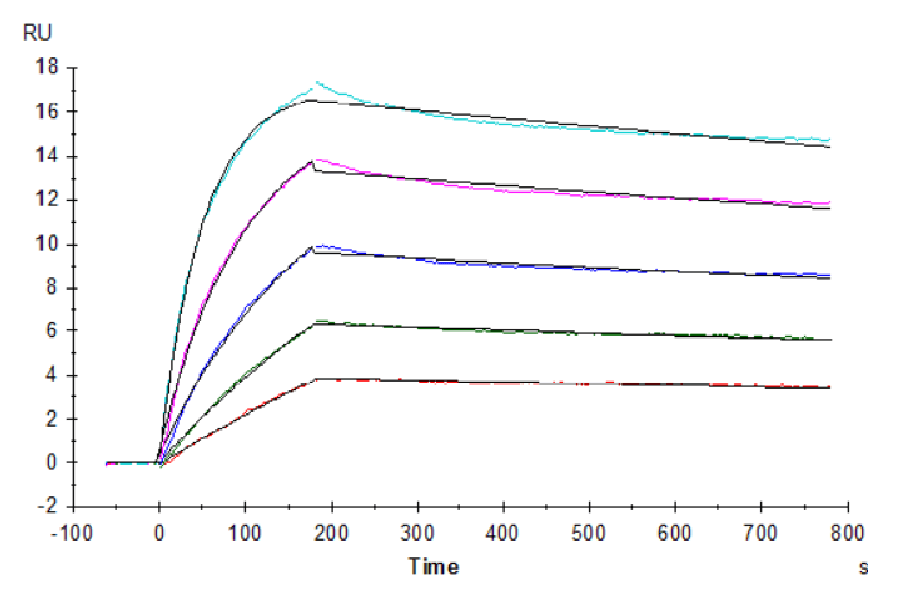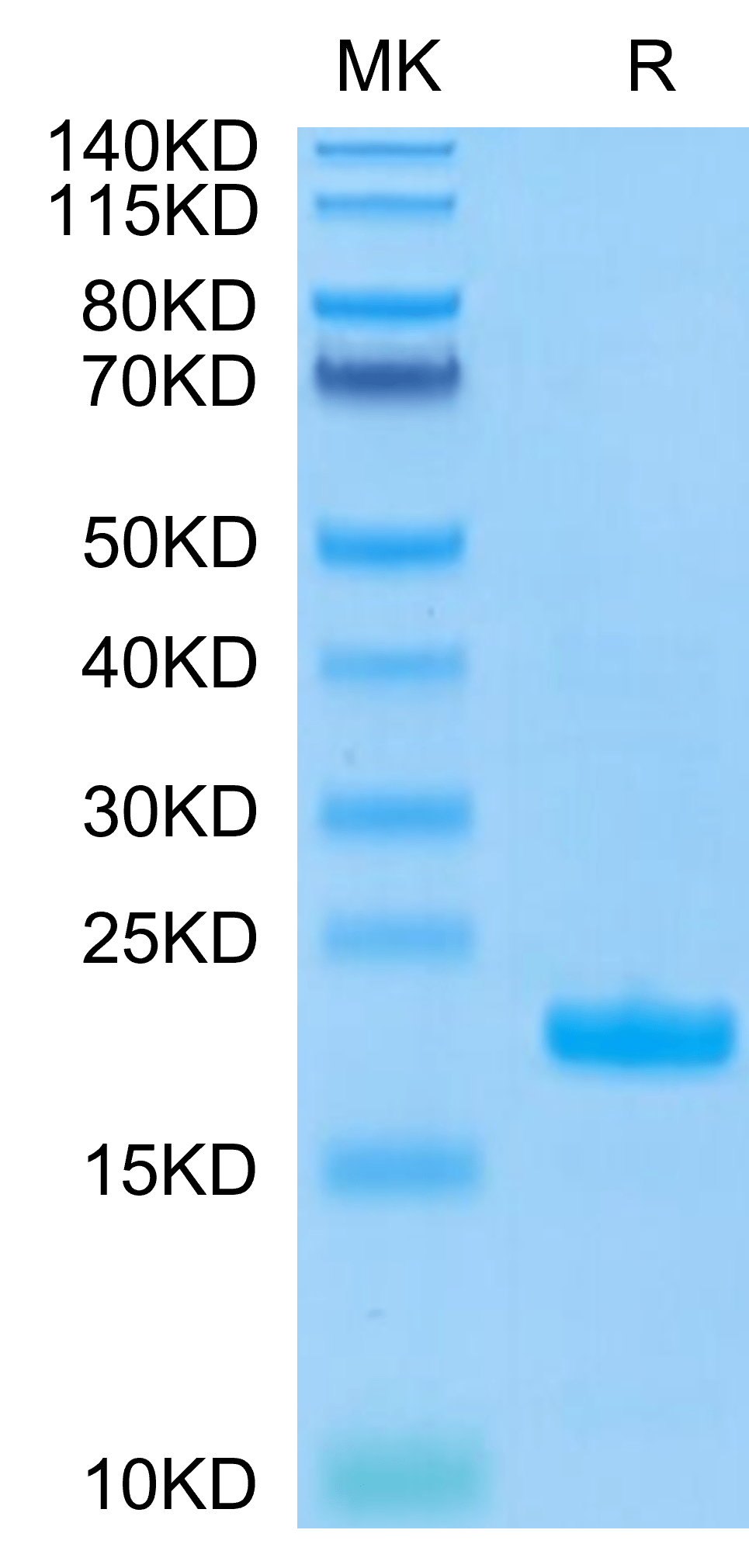| Weight | 1 lbs |
|---|---|
| Dimensions | 9 × 5 × 2 in |
| accession | NP_003801 |
| express system | E.coli |
| product tag | No Tag |
| purity | > 95% as determined by Tris-Bis PAGE;> 95% as determined by SEC-HPLC |
| background | Tumor necrosis factor (TNF)-related apoptosis-inducing ligand (TRAIL) is a member of the TNF superfamily that can initiate the apoptosis pathway by binding to its associated death receptors DR4 and DR5. The activation of the TRAIL pathway in inducing tumor-selective apoptosis leads to the development of TRAIL-based cancer therapies, which include recombinant forms of TRAIL, TRAIL receptor agonists, and other therapeutic agents. |
| molecular weight | The protein has a predicted MW of 19.6 kDa same as Tris-Bis PAGE result. |
| available size | 100 µg, 500 µg |
| endotoxin | Less than 1EU per μg by the LAL method. |
Human TRAIL/TNFRSF10 Protein 4072
$315.00 – $1,050.00
Summary
- Expression: E.coli
- Functional: Yes (ELISA)
- Amino Acid Range: Val114-Gly281
Human TRAIL/TNFRSF10 Protein 4072
| protein |
|---|
| Size and concentration 100, 500µg and lyophilized |
| Form Lyophilized |
| Storage Instructions Valid for 12 months from date of receipt when stored at -80°C. Recommend to aliquot the protein into smaller quantities for optimal storage. Please minimize freeze-thaw cycles. |
| Storage buffer Shipped at ambient temperature. |
| Purity > 95% as determined by Tris-Bis PAGE |
| target relevance |
|---|
| Tumor necrosis factor (TNF)-related apoptosis-inducing ligand (TRAIL) is a member of the TNF superfamily that can initiate the apoptosis pathway by binding to its associated death receptors DR4 and DR5. The activation of the TRAIL pathway in inducing tumor-selective apoptosis leads to the development of TRAIL-based cancer therapies, which include recombinant forms of TRAIL, TRAIL receptor agonists, and other therapeutic agents. |
| Protein names Tumor necrosis factor ligand superfamily member 10 (Apo-2 ligand) (Apo-2L) (TNF-related apoptosis-inducing ligand) (Protein TRAIL) (CD antigen CD253) |
| Protein family Tumor necrosis factor family |
| Mass 32509Da |
| Function Cytokine that binds to TNFRSF10A/TRAILR1, TNFRSF10B/TRAILR2, TNFRSF10C/TRAILR3, TNFRSF10D/TRAILR4 and possibly also to TNFRSF11B/OPG (PubMed:10549288, PubMed:26457518). Induces apoptosis. Its activity may be modulated by binding to the decoy receptors TNFRSF10C/TRAILR3, TNFRSF10D/TRAILR4 and TNFRSF11B/OPG that cannot induce apoptosis. {ECO:0000269|PubMed:10549288, ECO:0000269|PubMed:26457518}. |
| Subellular location Cell membrane {ECO:0000269|PubMed:14609566}; Single-pass type II membrane protein {ECO:0000305}. Secreted {ECO:0000269|PubMed:14609566}. Note=Exists both as membrane-bound and soluble form. {ECO:0000269|PubMed:14609566}. |
| Tissues Widespread; most predominant in spleen, lung and prostate. |
| Structure Homotrimer (PubMed:26457518). One TNFSF10 homotrimer interacts with three TNFSF10A mononers (PubMed:26457518). One TNFSF10 homotrimer interacts with three TNFSF10B mononers (PubMed:10549288). {ECO:0000269|PubMed:10549288, ECO:0000269|PubMed:26457518}. |
| Post-translational modification Tyrosine phosphorylated by PKDCC/VLK. {ECO:0000269|PubMed:25171405}. |
| Target Relevance information above includes information from UniProt accession: P50591 |
| The UniProt Consortium |
Data
Publications
Publications
| pmid | title | authors | citation |
|---|---|---|---|
| We haven't added any publications to our database yet. | |||
Protocols
| relevant to this product |
|---|
Documents
| # | ||
|---|---|---|
| Please enter your product and batch number here to retrieve product datasheet, SDS, and QC information. | ||


















